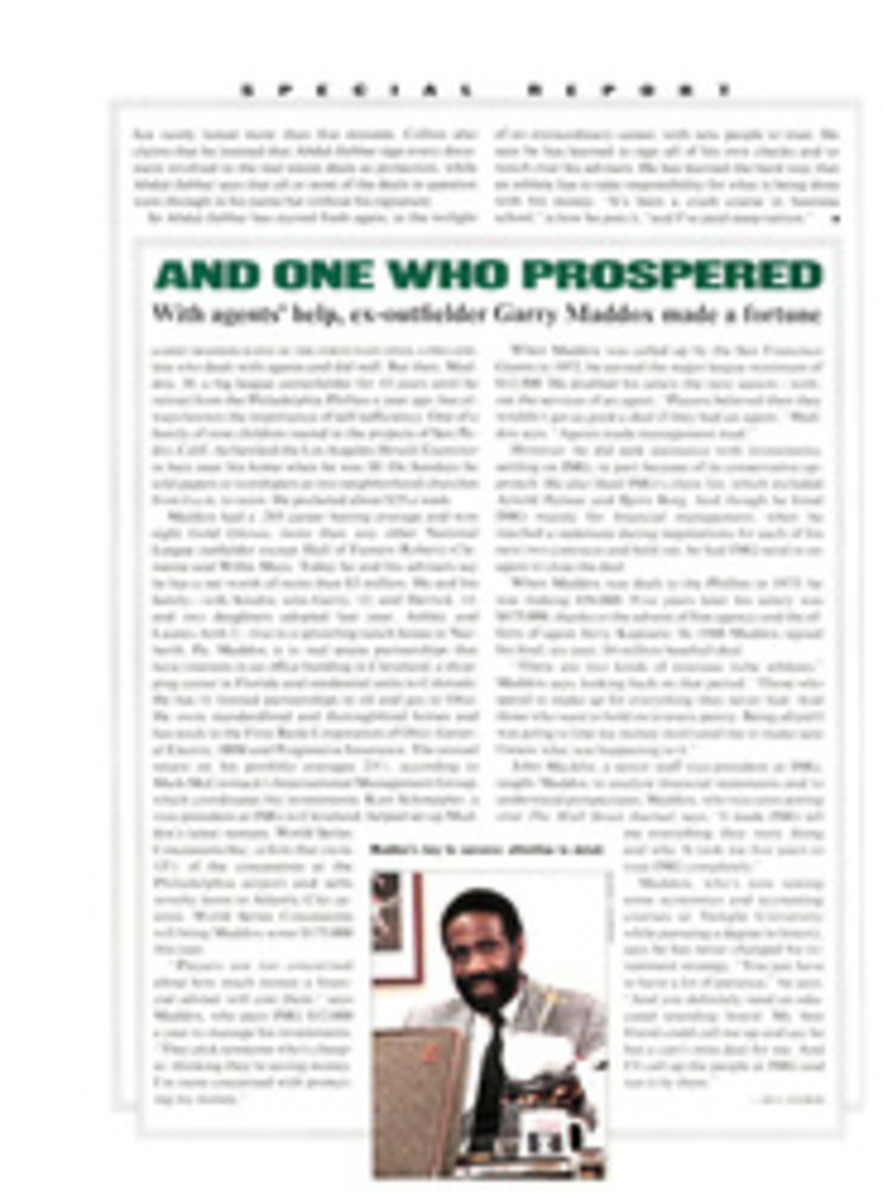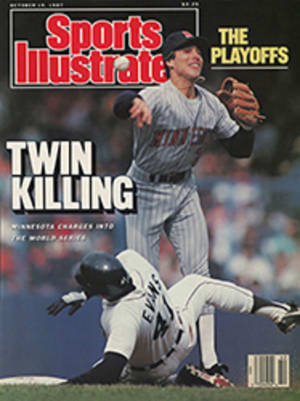
YOU CAN LOOK IT UP: BASEBALL IS OLDER THAN YOU THINK
Those of you debating the origins of baseball, take notice. There's evidence suggesting that the date of creation should be pushed back—not by years, or even decades, but to a different century. At the American Antiquarian Society in Worcester, Mass., there is a reference to the game in Little Pretty Pocket Book, which was published in 1787. This tiny volume, which sought to teach the alphabet to "Little Master Tommy and Pretty Miss Polly," included this description of Base-Ball:
The Ball once struck off,
Away flies the Boy
To the next destin'd Post,
and then Home with Joy.
Despite its name, the American Antiquarian Society is not a gaggle of blue-blooded, blue-haired ladies softly discussing the merits of Chippendales vis-a-vis Hepplewhites. Nor is it simply a gathering of sports historians, although its sports collection is extensive and impressive. The society, which is situated in a Georgian building at 185 Salisbury Street, is a 175-year-old independent research library on all Americana, and possesses an impressive endowment of $17 million. It has 20 miles of shelves and millions of documents pertaining to life in the U.S. before 1877. It's estimated that two-thirds of all the material printed in the colonies and the U.S. between 1640 and 1821 can be found at the society.
The American Antiquarian Society was founded in 1812 by Isiah Thomas, a Boston printer who came to Worcester in 1775 to escape the Revolutionary War and who became the leading printer, editor, publisher and bookseller in the young nation. Thomas's fortune and books formed the foundation of the society, and his old flat press holds a place of honor on a balcony overlooking the reading room.
The facility is open, by prearrangement, to scholars, students and authors from around the world. It is even possible for anyone anywhere in the U.S. to obtain electronic access to the society's computerized catalogues. The Antiquarian Society also makes available to libraries microfilm reproductions of its collection of newspapers and of 90,000 brochures, books and broadsides published from 1640 to 1820. During the week of Oct. 18, the society will celebrate its 175th birthday with parties and academic processions—and, for the first time since the Bicentennial, public tours of the premises.
Jockish bibliophiles who venture to Worcester during the celebration will discover numerous sources on early American sports. There are many baseball documents, including handbooks and guides from the 1800s and the 1859 Constitution and By-Laws of the National Association of Base Ball Players. The latter proves that some things never change: It announced that due to excessive consumption, refreshments would no longer be available or even permitted at baseball games. The library also includes several 19th-century sports journals, such as The Sportsman, the New York Sporting Magazine and Porter's Spirit of the Times, which billed itself as the Sporting Chronicle of America.
Gymnastics, swimming, shooting, boxing, wrestling and sailing are all represented among the materials, with particular emphasis on things horsey: trading, training and racing. Rowing, a big sport in Worcester then and now, is also well represented. Media accounts of an 1871 crew race in nearby Ingleside, a suburb north of Springfield, give insight into the spirit of those times. No fewer than five newspapers from Boston, Hartford and New York covered the regatta, involving, among others, the "Farmers" and the "Brahmins." To everyone's surprise, the Aggies from the University of Massachusetts trounced both Harvard and Brown. Moreover, when a timekeeper's error was corrected, it was discovered that the "country rustics" had clocked the fastest time ever. Editorials in the Boston Daily Journal gleefully chided the lads of the elite for such a humiliation.
Another important athletic activity in 18th-and 19th-century America was pedestrianism. Newspaper ads regularly announced challenges, matches and exhibitions—such as an 1877 50-mile, 12-hour walk by "Miss Mary Marshall, Champion Lady Pedestrienne of the World."
Newspapers also published race results and purses. Recently, though, Antiquarian Society staffers were puzzled by their inability to discover the winner of a race held in Boston in 1868. Everything about the competition, the weather and a postrace celebration was found, but the name of the top finisher seemed destined to remain unknown. Refusing to be daunted, the society's researchers finally discovered an oblique reference to the winner, buried in the Boston Daily Advertiser published three days after the race. Everyone beamed with triumph and pride. Unearthing such aged tidbits gives Antiquarians a fine old time.
PHOTO
GIFT OF DR. C.L. NICHOLS/AMERICAN ANTIQUARIAN SOCIETY
Base-Ball as it was depicted in a 1787 book.
Daphne Hurford is the author of "The Right Moves, "a book about male ballet dancers.

